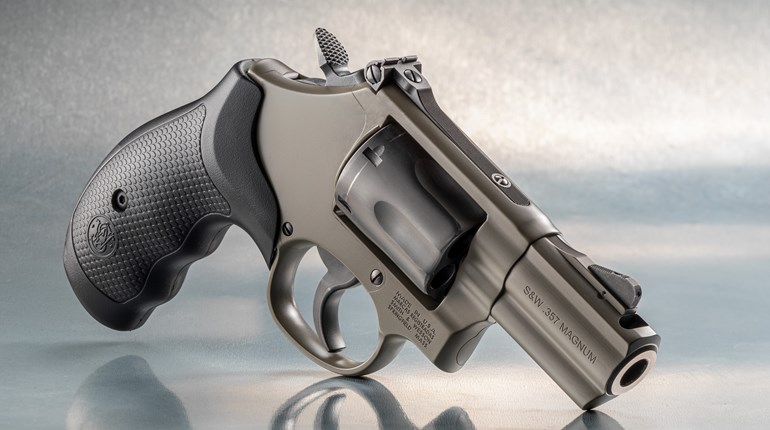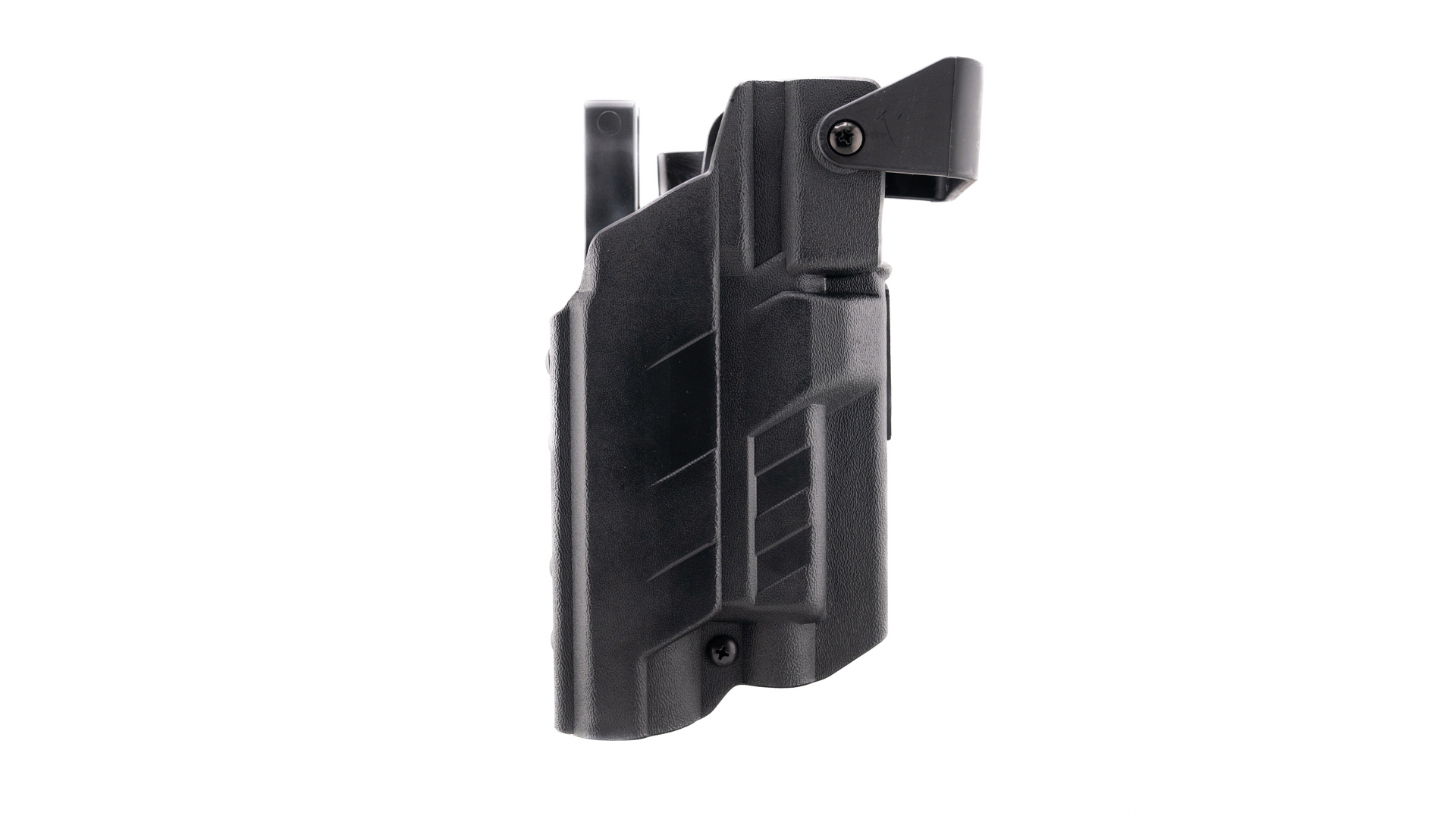
Several of the features that contribute to the lockup of today’s medium- and large-frame revolvers can be traced back to the Smith & Wesson Triple Lock.
I was finishing up the front lawn when my friend pulled into my driveway and got out of his car. He was not only one of my fellow deputy sheriffs, but also one of our department’s handful of devoted shooters and gun buffs. We were all constantly trying to outdo one another when it came to cool stuff. Since he had something wrapped in an old towel and was kinda wild-eyed, I knew he had come up with a real find. The Code of Cool prohibits effusive responses, but I almost lost mine when I unwrapped the revolver. He ventured the question: “Is this what I think it is?”
Yes, it was. The instantly familiar contours of barrel and butt, front sight and rear notch, as well as the underlugged barrel fairly screamed “Smith & Wesson.” The size of the revolver meant a big Smith & Wesson. Although his new prize had seen better days and the intertwined S&W on the sideplate was nearly illegible, it was a by-golly pure First Model .44 Hand Ejector. Called the New Century Model by the factory and the Triple Lock by appreciative hand-gunners worldwide, this was the maker’s notice-of-intent to produce the best revolvers ever. My friend made a real find, because his was not only correct, but also serial number 33. Quite possibly, it was made on the first day. I eventually wheedled it away from him.
Smith & Wesson made slightly fewer than 20,000 copies of the Triple Lock from 1907 to 1915. Most were chambered for the equally new .44 Spl. cartridge, a lengthened and improved version of the .44 Russian. While there were a handful of other cartridges in experimental and special-order guns, that .44 Spl. cartridge actually lasted beyond the gun.
Toward the end of production, the War Office of Great Britain asked Smith & Wesson for revolvers in .455 Webley and several thousand Triple Locks were made—some re-chambered and re-barreled. Triple Locks, in general, came in blue or nickel, with 4-, 5-, 6.5- and 7.5-inch barrels. Target model guns exist, as well as a few other oddities. In every case, the Triple Lock left the Massachusetts plant as a marvel of precision gunmaking. They were the very best thing available in their day and many years after.
The gun is a solid-frame sixgun with double-action and single-action trigger systems. It has a swing-out cylinder and hand-operated ejector rod. That means the shooter swings the cylinder open and pushes the end of the ejector to clear all six chambers. Since the frame is solid, it is stronger than the hinged-frame revolvers that served Smith & Wesson well for the first 5 decades of the company’s existence. All revolvers in its current catalog use the same basic concept.
All have a center pin that runs from the action through the center of the breechface, through the ejector rod and out the front of the cylinder, ending up against a spring-loaded plunger lug under the barrel. When you press the thumb latch, the pressure runs completely through the gun to the little plunger under the barrel. It also clears from a locked-up position at the rear. That’s two locks on all Smith & Wesson revolvers.
Except the Triple Lock, which has a third one. This one locks with another spring-loaded plunger in the lower edge of the enclosed barrel underlug. It locks into a hardened recess in the yoke, which is the part onto which the cylinder pivots. As complicated as this all sounds, it is done in an extreme effort to keep the cylinder in perfect alignment with the barrel, shot after shot, year after year.
Because of the near-indescribable difficulty of keeping all of these surfaces parallel, the work could only be done by experienced fitters of high skill level. Smith & Wesson had them, and the result was a magnificent piece of shooting equipment. The guns still exist and may still be used. I have fired both of the Triple Locks I have owned.
There is a piece of irony in this story. Several thousand .455 Triple Locks went to Britain and were not popular for trench warfare. The World War I trenches were extremely wet and muddy. While the finely fitted mechanism of Smith & Wesson’s best was appreciated for its quality, it was too easily put out of action by the terrain. Regretfully, the maker had to take off the full underlug with its third lock for future sales. Ironically, when it did so for all future sales, there did not seem to be much difference in either accuracy or reliability. Go figure.
It is uncommon to find one of these revolvers in original shape. Sure, high-end collectors might find a mint specimen for their safe-queen/never-fire collection. But, most Triple Locks are kind of rough because they were cherished and used and passed on to the next generation. Times have changed and so have the guns. The early books and magazine articles by guys like Keith, Askins and Hatcher may have accurately reported on the use of the Triple Lock in early-century police work, but its legendary reputation began with the skilled Yankee gunmakers.
Were they really used? Sure, and used well. The best example I know of is that of the Texas Ranger legend Frank Hamer. Best known for bringing Bonnie & Clyde down, Hamer had many previous gunfights in the course of his career. He often carried two revolvers when working. His favorite was a .45-caliber Colt Peacemaker, but his backup on these missions was a Smith & Wesson Triple Lock. That was a guy who knew his fightin’ iron.






































